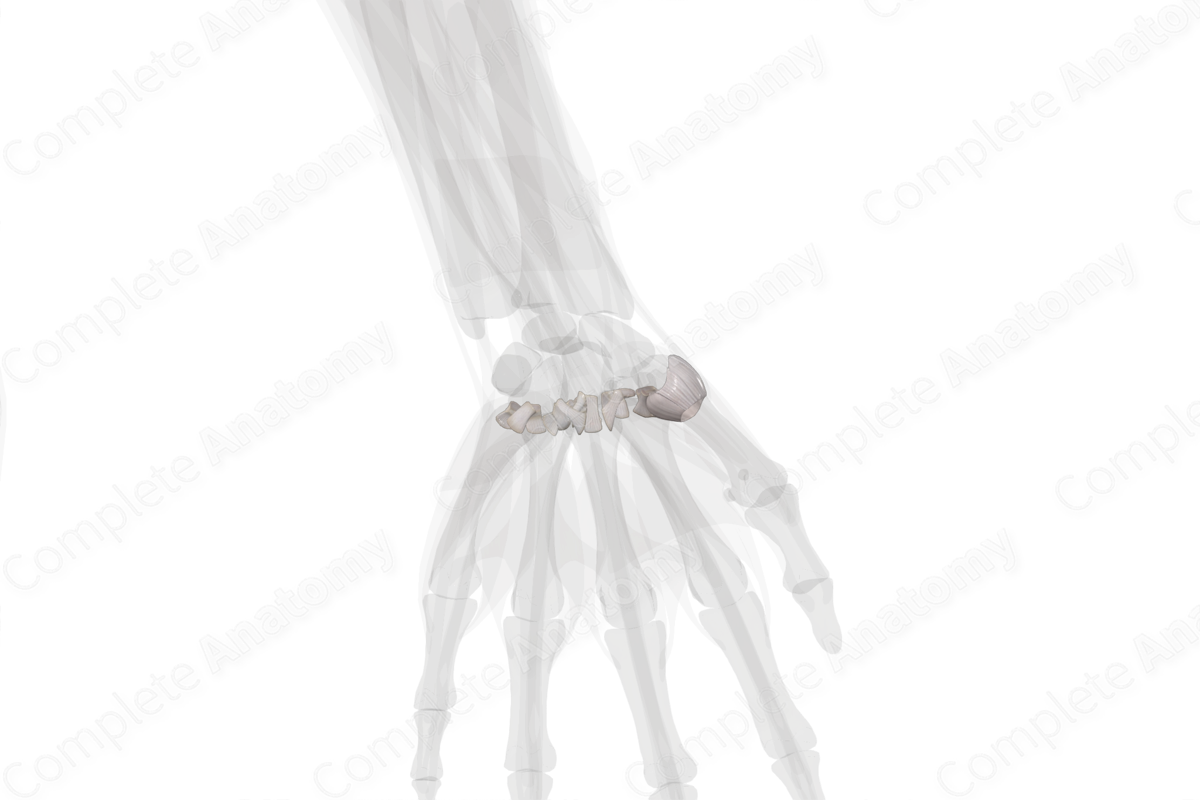
Description
The carpometacarpal joints are the articulations between the base of the metacarpals with the distal row of carpal bones, i.e., the trapezium, trapezoid, capitate, and hamate.
The first carpometacarpal joint, or the carpometacarpal joint of the thumb, is a saddle (or sellar) synovial joint that allows opposition of the thumb. It is formed by the articulations between the base of the first metacarpal with the trapezium. The joint is stabilized by the palmar, dorsal, and lateral carpometacarpal ligaments on the ulnar side of the joint.
The second to fifth carpometacarpal joints are synovial ellipsoid joints formed by the articulations between the bases of the second to fifth metacarpals and the distal row of carpals. These joints allow slight gliding produced by the long flexor and extensor muscles of the digits. The carpometacarpal joints are stabilized by dorsal and palmar carpometacarpal ligaments.




